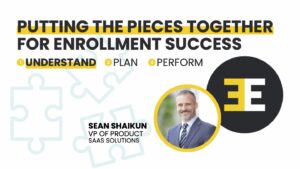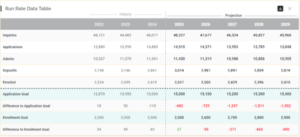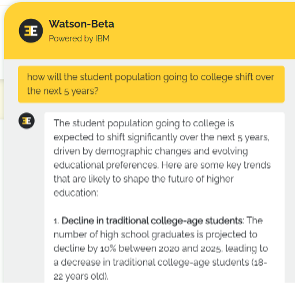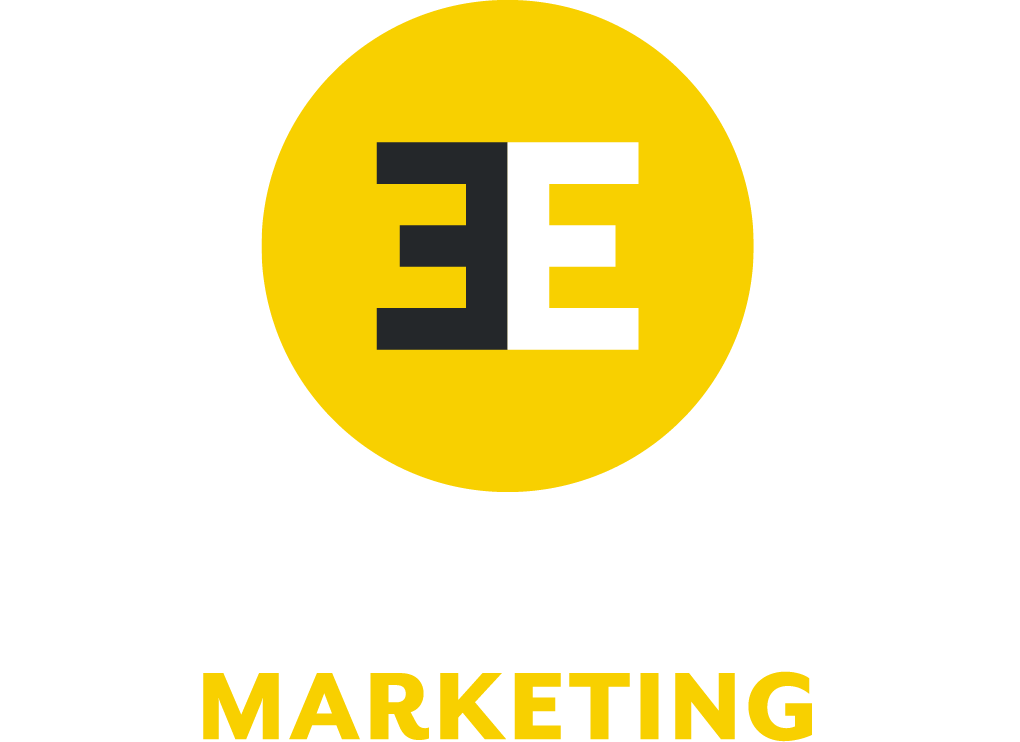
Does the data say there is an enrollment cliff coming? Sure, higher education is undergoing a transformation, but is it a cliff? We don’t think so. We agree that shifting student populations, escalating costs, and fierce competition from flagship and prestigious universities are creating unprecedented challenges. But a cliff? No way. Many institutions are still expected to maintain, or even increase, enrollment, often while grappling with budget cuts and staff reductions.
How can you navigate this turbulent environment and thrive?
Simply understand, plan, and perform.
Understand.
Begin by asking probing questions and conducting thorough research to grasp the challenges you face fully. Define your goals with clarity and purpose. What are you striving to achieve, and why? What external factors will influence your outcomes?
At 3E, we employ a powerful tool to illuminate the path forward: the Run Rate.
While not widely used in higher education, Run Rates are a familiar concept for leaders and boards, offering valuable insights into financial performance. The 3E Run Rate predicts the trajectory of your enrollment pipeline, assuming your current strategy remains unchanged while market forces evolve around you.
Leveraging of data points, we forecast shifts in high school graduation rates, college-going rates, demographics, and student distribution. This data-driven analysis empowers institutions to anticipate the impact of these changes on their enrollment numbers and answer important questions like:
- How much of our enrollment will come from our existing market share?
- How much of our enrollment will come from natural market growth (or decline)?
- How much of our enrollment/path to goal will we need to secure by gaining share in an increasingly competitive market?
Utilize the 3E Run Rate to establish intelligent, achievable goals and to evaluate the feasibility of existing targets critically.
To illustrate, let’s imagine I’m the Enrollment Leader at a mid-sized university. I’ve been tasked with a challenging goal: increase enrollment by students annually for the next five years. In times of growing college attendance, enrollment increases of 5-7% often happened naturally. Now, however, with potential declines in the student population, I must carefully assess the feasibility of our enrollment goals. A target of 100 additional students, for example, might require us to recruit 150-200 new students just to offset anticipated losses. Therefore, we need to determine if our desired growth is truly attainable given these demographic headwinds.
Before embarking on any new initiatives, I need a baseline understanding of our historical performance. What happens if we maintain our current strategies while the external landscape evolves? This critical question can be answered with the 3E Run Rate.
In seconds I can see my historic enrollment numbers. One thing that stands out is that top of inquiries grew, but ultimately yield and enrollment declined Yield decline is evidence of more intense competition for students, either from private sector (decline in college going rate) or from institutional competitors (direct impact on yield).

Now, I can shift my focus to the future. By analyzing historical data in conjunction with millions of external data points, I can project future enrollment trends. While a rebound may be achievable next year, prevailing market forces suggest that replicating this success over the next four years will be increasingly challenging.
Why do we see these trends?
I can put this question to Watson – 3E’s IBM-powered AI Chatbot.

Nationally, a decline in traditional college-bound students is a significant headwind. Within my state, this trend is further amplified by a rapidly diversifying and increasingly complex student population over the next five years. Traditional enrollment strategies, designed for a different era, may no longer yield the desired results in this evolving landscape. Although demographic shifts are a reality, they don’t represent an insurmountable obstacle. Instead, I can target growing regions with a focused strategy. This involves demonstrating the undeniable value of a college degree and showcasing how my institution is the ideal choice for prospective students in key demographics and geographic areas.
By establishing a data-driven projection of my future performance, I can determine the gap I need to close through market share growth strategies. This leads to the question: Where and on what should I focus my efforts to influence more students to invest in higher education with my
For more information on the power of 3E ForwardIQ Forecast, schedule a meeting with one of our 3E experts HERE!


